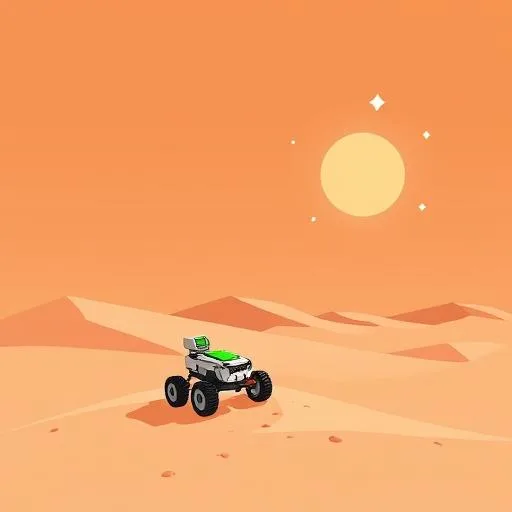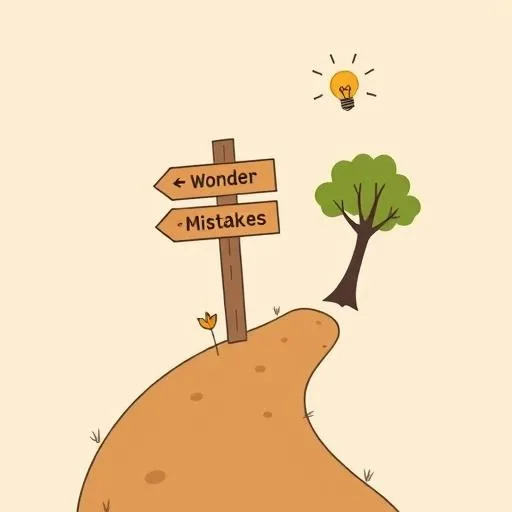
Overcast skies have a way of tuning our eyes upward, don’t they? It’s when your mind wanders to distant planets—cloudy, mysterious, and humming with secrets. It’s in these moments we ponder how technology, like AI exploring Mars, intersects with our innate curiosity. Yet as artificial intelligence quietly pilots rovers across Mars with 88% autonomy (yes, machines now navigate alien dunes without human hand-holding), a quiet question surfaces: does the wonder diminish when we’re not in the cosmic driver’s seat? Alex Li voices this gently—that exploration’s soul might fade when stripped of human struggle and awe. Let’s wonder together about what this means for the little explorers in our lives and how to nurture their curiosity.
How Do Rovers, Rockets, and Robot Brains Shape Exploration?

Picture it: a rover alone on Mars, scanning rust-colored landscapes no human has touched. NASA’s Perseverance doesn’t just roll—it thinks. Using onboard AI, it maps terrain, dodges boulders, and even picks promising rocks for closer study—all while 140 million miles from home. This isn’t sci-fi; it’s reality where AI crunches astronomical data faster than we’d sip morning coffee. Telescopes like Kepler now spot potential exoplanets by detecting whispers of starlight dimming—a task impossible without machine learning sorting mountains of data. Machines handle the heavy lifting, freeing human minds for bigger questions: ‘What if life glows faintly in some distant twilight?’ Yet beneath the tech marvel, something tugs at us—a warmth we crave in discovery, a spark of human wonder that AI can’t replicate.
Why Does Exploration Need a Human Heart?

Alex Li’s insight lands like a quiet revelation: exploration isn’t just about reaching places—it’s about the heart-pounding excitement when we launch, the breathless pause at a discovery, the shared stories around campfires (or mission control). Imagine a child digging for worms after rain—mud on cheeks, pure delight in the hunt. Strip away that tactile joy, replace it with a screen showing ‘worm locations,’ and something vital evaporates. Similarly, if AI scouts every crater solo, do we lose the human spark that turns data into meaning? Space isn’t sterile math; it’s the gasp when we realize Earth is a pale blue dot. For our kids, this matters deeply. True learning isn’t just ‘getting answers’—it’s the wobbly first steps toward wonder, and nurturing curiosity in a tech-filled world requires balancing innovation with heartfelt connection.
How Can You Stargaze in Your Own Backyard?
Here’s the joyful bit: cosmic curiosity starts not with rockets, but with bedtime stories of constellations and puddles turned into ‘lunar seas.’ I’ve watched kids trace Orion’s belt with sticky fingers, their eyes alight with ‘what-ifs.’ That’s the magic AI can’t replicate—the human connection between question and quest. So, what if we lean into less screen-driven ‘discovery’ and more tactile awe? Why not swap an app for a blanket on the grass, naming cloud shapes as spaceships? Or after rain, hunt for ‘alien footprints’ in the mud? NASA reminds us that even broken sensors on Mars (like InSight’s wind tool) spark creative fixes—teaching kids that ‘mistakes’ are just detours to new ideas. Tech helps us see farther, but we must keep the flame of ‘why?’ burning bright, fostering curiosity through hands-on adventures.
How to Guide Young Explorers Through the Noise

Balancing tools with tenderness—that’s the art. AI analyzes starlight for habitable worlds, yet the deepest lessons come when we pause and ask, ‘What would YOU pack for Mars?’ Transforming data into dreams requires both. Think of it like baking: measurements matter (hello, AI precision!), but the love stirred in—the laughter over lopsided cookies—is what makes it meaningful. Today’s kids navigate a world where ‘knowing’ is a click away, yet what truly sticks is the shared wonder. So, try this: next time a storm rolls in, don’t just check the weather app. Step outside, feel the air thicken, and whisper with your child, ‘What stories might clouds tell?’ That’s how we safeguard the human essence of exploration—not by rejecting tech, but by ensuring it amplifies, never replaces, the warmth of shared curiosity and the gentle art of nurturing wonder.
As we tuck our little explorers in, may their dreams be as vast as the cosmos we explore together.
Source: More than machines: When AI explores the stars without us, The Space Review, 2025/09/08 11:58:00
